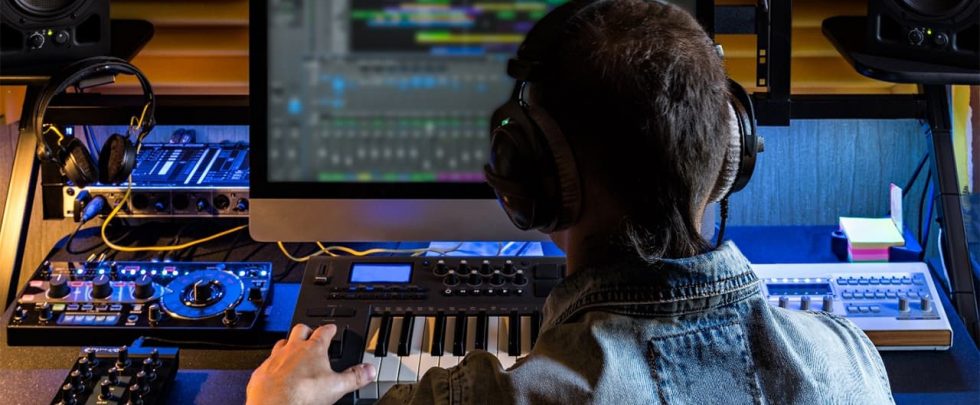11 Ways to Find Immediate Inspiration for Your Next Composition
In this tutorial we’ll discover eleven techniques that you can use to consistently generate new ideas from the inside out.
Imagine someone you’ve never met walks up to you at a party and says, “Tell me a story.”
Your first response will probably be, “Umm…” as you try to think of something to say.
Now instead imagine they said, “Tell me a story about when you first learned how to drive.”
Now you’ll probably be able to think of something to say.
Even if it’s not the most fascinating story you can come up with, the prompt will give you enough to go on to get your storytelling juices going.
The blank page can be a writer’s worst nightmare, but in a professional situation you can’t wait around for lightning to strike.
That’s why starting with anything is better than starting with nothing.
The simple trick is to give yourself a prompt. Any prompt.
Here are eleven ways you can instantly generate a prompt for yourself to start writing your next composition or song.
1. Rhythm: From Language
Of all the techniques we’re going to explore, my favorite is to use words to generate a rhythm.
Use both the natural timing and accents to form either a motive, or even an entire phrase.
For example, if you say the word “Audiotuts” you can say it in a rhythm similar to one of these:

Now, instead of a blank page, I already have something to work with.
Just using the rhythm from “Audiotuts” helps me come up with some ideas:


A fun way to decide which words to use is by choosing something related to what you’re working on.
Perhaps you’re scoring a film and trying to come up with a theme for the Cyclops. To me, saying “The Cyclops” sounds like this:

I’ll use that rhythm and come up with an idea for the Cyclops’ theme:

Since there isn’t any real meaning behind using the actual character’s name, it can be just as invigorating to use a random selection of words.
For example I went to Reddit and chose “Random” to let it take me to a random post.
The first headline to come up was, “This has to become a reality,” which generates the following rhythm:

I’ll use that rhythm to come up with a few ideas:


2. Rhythm: From Another Song
Another place to find a rhythm to get you started is from another piece of music.
If you’re worried about copying, choose a style completely different from what you’re writing.
The point isn’t to copy the other song, but just to get an idea.
For example, let’s say I’m trying to write a sad piano piece and I just can’t think of what to write.
I hop on YouTube, and the first song I find is Robin Thicke’s Blurred Lines, and the first vocal line in the verse has the following rhythm:

That’s all I need to go on to start coming up with an idea:

3. Harmony: Two Chords
Remember that the main purpose here is to give yourself a prompt, something that is a given from which to expand on.
An easy technique is to choose two chords as your opening, either by finding two you like or even by picking at random.
Randomly rolling a dice, I landed on the chords Em to Cmaj7. Not the most exotic combination, but I can work with it.
It is kind of interesting because three out of four tones in a Cmaj7 chord are already the same as E minor.
So, with this pairing as the clay to play with, I might come up with something like this:

4. Harmony: A Unique Harmony
I’ve had students tell me, “I’ve never used an augmented chord.” Well, then use one!
Choose a harmony that feels fresh or that perhaps you’ve heard about but never played with.
If I decide to use chords built on fourths,
I might improvise at the piano and come up with something like this that could lead to a lot of possibilities:

Or I’ll even try out that “unused” augmented seventh chord:

5. Harmony: Special Progressions
In the same way that two random chords might lead you down an interesting path,
coming up with a chord progression with an inherent logic to it can spark ideas as well.
For example, I might decide that I want a chord progression that has a descending chromatic scale in the bass:

Or perhaps before I start writing I’ll decide I want to only use minor chords,
and every chord has to share a common tone with the one that came before it:

By constraining yourself to a certain logic, you give yourself a solid structure to be imaginative around.
6. Pitch: Choose Any Interval
This sounds simple because it is, but it works. You simply decide for yourself,
“I’m going to start with C going to A,” and then let yourself improvise on the possibilities.
So, if I have to start with those two notes, I might come up with these ideas:


7. Pitch: Choose an Interval with Significance
In his book “The Language of Music,” Deryck Cooke explores the idea that certain intervals have an inherently emotional quality.
For example, the major third is happy,
the perfect fifth is strong and stable, and so on.
If you are writing for a programmatic purpose and need a certain mood,
choosing an interval that suggests that mood is a good place to start.
For example, the minor 6th can have a sad longing quality,
so if I make myself start with that melodic interval I can come up with some opening thoughts:


8. Pitch: A Unique Scale
The boring old major scale can leave a lot to be desired when you’re looking for inspiration. Thankfully,
there are many more options available, and you can choose one that someone else has made up or even make up your own.
Perhaps I know I want something dark, so I’ll experiment with the Phyrgian mode:

And come up with:

Or a Lydian b7 scale:

And I’ll make sure to emphasize the uniqueness of the #4 and b7:

9. Timbre: Use Unfamiliar Instruments
If you’re not having any trouble coming up with actual musical ideas,
but you’re feeling uninspired, try writing for an instrument that you have never used before.
Have you ever written for accordion? How about balalaika?
Try listening to some classic examples of those instruments in their natural setting.
Maybe some polka isn’t on your playlist every morning?
The new sounds may be enough to get your imagination warmed up.
You can have a lot of fun, either trying to write in a style unfamiliar to you, or seeing how you can make that new sound fit your current style.
10. Timbre: New Instrumental Techniques
The violin can do way more than play legato or staccatto.
Have you ever written a part for strings using nothing but pizzicatto?
What about col legno for a rhythmic technique?
When you’re getting tired of the same old sounds pull out an orchestration book,
or even better get a hold of an instrument and start purposefully making sounds with it you’ve never heard before.

11. Timbre: Browse Through Patches
This is probably the most common method already used!
This one works for me all the time when I have absolutely no idea how to get started on a piece.
Pulling up a plugin (preferably one I don’t use very often) and browsing through patches always eventually leads me to coming up with something cool.
Be warned: This is a fast track to procrastination.
You can play with your synth for hours and never actually create any music.
This is part of why I saved the timbre section for last, because the other methods are far more inclined towards writing actual music.
As soon as you find something that catches your ear, get off the settings and start writing!
Conclusion
You may have noticed that I treat the material from each of these techniques as something to play with.
This is supposed to be fun, and putting apparently arbitrary constraints on yourself can actually turn writing music into a game.
And playing a game is a lot more engaging than doing work!
You might also notice that in the course of this article I came up with a ton of ideas for new music.
Some are better than others, but even if none of these work I can crank out a few dozen more without breaking a sweat.
Whether you use one of these specific methods to generate ideas, or come up with your own, is not important.
The essential idea you take away from this tutorial is that nothing comes out of nothing.
If you want to create something you have to start with something!
OK, you’ve got your initial idea. Now get to work!




 100% Secure Shopping
100% Secure Shopping